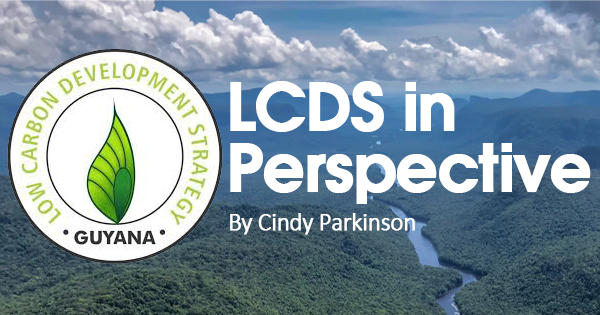LAST December, as part of a historic carbon credit agreement signed with Hess Corporation to sell Guyana’s carbon credits, Amerindian villages throughout Guyana are set to receive US$22.5 million in direct allocation.
At the signing ceremony in Baridi Benab at State House, Dr. Bharrat Jagdeo, the Vice President of Guyana, shared Government’s vision for this programme. He also outlined, during the event, that it was in accordance with the commitment made in LCDS 2030 to provide the Amerindian communities, in both forested and non-forested areas, with 15 per cent of the earnings from any sale of forest carbon. This will be in the form of direct payments.
Additional investment will be made from 85 per cent of total earnings in health, education, hinterland infrastructure, land titling, and ICT development, among other areas.
According to the Vice President, Guyana would receive $187 million as compensation for the “legacy era” (2016–2020), and with the new agreement, payments of $250 million for the years 2021–2025 and $350 million for the years 2025–2030 are anticipated. It was also noted that the Amerindian communities will determine the investment of these finances.
The Vice President said that even though the agreement between Hess and Guyana is a significant deal, market prices would likely increase in the voluntary market. According to him, it is genuinely transformative. It truly moves Guyanese closer to the two objectives the country has been working towards for 15 years, namely, a world where Guyana will value more forest carbon, enabling the country to move closer to a compliance market.
In addition to receiving the 15 per cent, the Amerindians will directly benefit from all components of the Low Carbon Development Strategy (LCDS) 2030, particularly programmes involving renewable energy and climate adaptation and mitigation. Several village plans have already been prepared, paving the way for village investments to commence.
 To direct activities in the forest sector that reduce emissions from deforestation and forest degradation, as well as the sustainable management of forests, and the conservation and enhancement of forest carbon stocks in developing countries, the United Nations Framework Convention on Climate Change (UNFCCC) Conference of the Parties (COP) developed the REDD+ framework. The first TREES credits in the world were issued to Guyana by the Architecture for REDD+ Transactions (ART) last year, which also represents a historic first for a nation to receive carbon credits created for the voluntary and some compliance carbon markets for successfully preventing forest loss and degradation, or jurisdictional REDD+.
To direct activities in the forest sector that reduce emissions from deforestation and forest degradation, as well as the sustainable management of forests, and the conservation and enhancement of forest carbon stocks in developing countries, the United Nations Framework Convention on Climate Change (UNFCCC) Conference of the Parties (COP) developed the REDD+ framework. The first TREES credits in the world were issued to Guyana by the Architecture for REDD+ Transactions (ART) last year, which also represents a historic first for a nation to receive carbon credits created for the voluntary and some compliance carbon markets for successfully preventing forest loss and degradation, or jurisdictional REDD+.
Following the conclusion of an independent validation and verification process and acceptance by the ART Board of Directors, Guyana has been granted 33.47 million TREES credits by ART for the five years between 2016 and 2020.
Because these serialised credits are listed on ART’s open registry, buyers can access them on the global carbon market.
This historic achievement has been lauded by Derrick John, the NTC chairman, and a Guyana delegation member that attended COP 27.
The NTC expressed, in a news release in response to ART’s assertion, that the success will further support Amerindian communities’ attempts to develop sustainable methods of sustenance and protect their forests.
The NTC said it was glad that Guyana is leading efforts on climate finance that would directly assist indigenous peoples in promoting climate resilience and sustainable livelihood prospects. The NTC is the national body representing all elected indigenous village leaders in Guyana.
Guyana’s successful completion of the ART procedure for the years it has applied for so far opens the door for other governments seeking to benefit from carbon market financing for their efforts to protect and restore forests successfully.
(This is part of a weekly series on LCDS.) The author can be contacted at [email protected]



